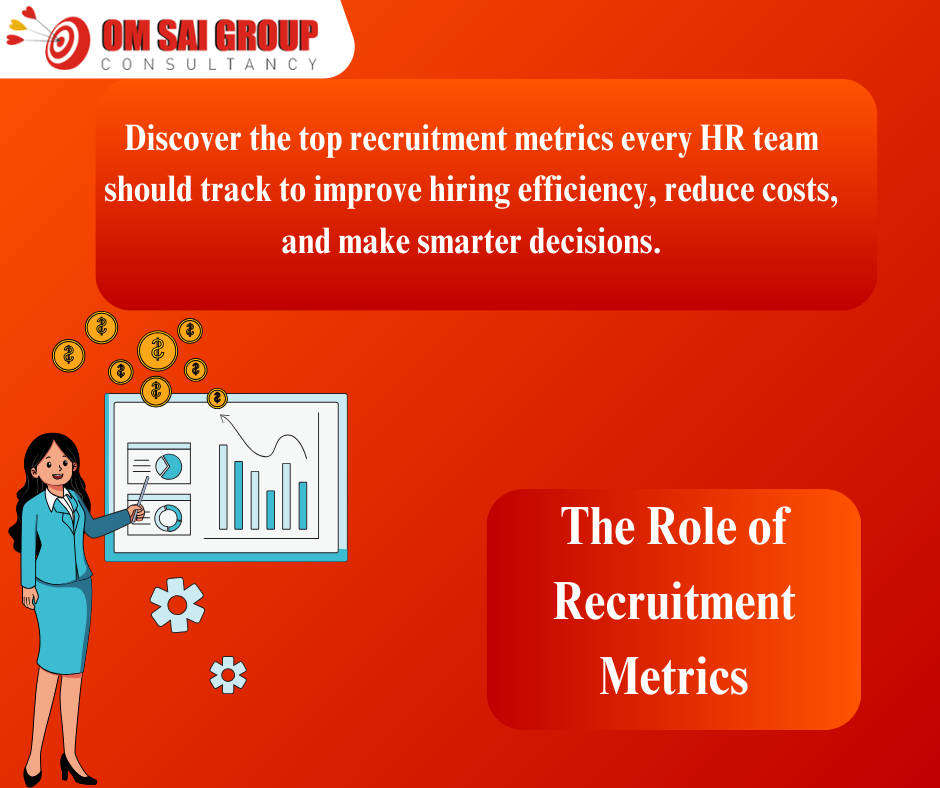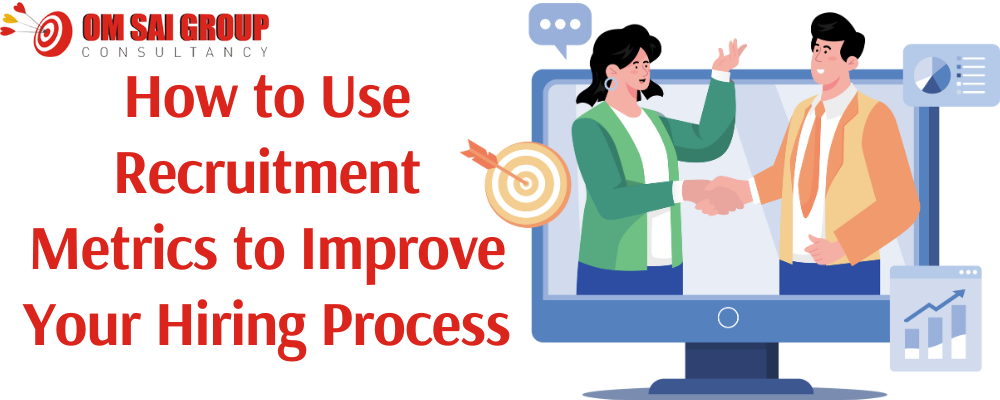
Top 10 Recruitment Metrics Every HR Team Should Track
Introduction
Recruitment in the current competitive job market is more data-driven than ever before. Tracking the right recruitment metrics can make or break your hiring strategy. You may be an HR manager at a fast-growing startup or a recruitment specialist at a large organization, but being aware of which hiring metrics are most critical can optimize processes, improve candidate quality, and enhance overall team performance.
About Om Sai Group Consultancy, a top recruitment solution brand, highlights data-driven recruitment for better decision-making. Right from talent acquisition metrics to recruitment analytics, the metrics you monitor will have a direct bearing on the success of your talent strategy.
We distill the top 10 recruitment metrics that every HR team must monitor — together with actionable benefits, real-world usage, and why it’s crucial. Recruitment workshops
The Role of Recruitment Metrics
Recruitment metrics are a roadmap to better hiring. They steer companies to align hiring efforts with business goals, standardize, and optimize. From measuring sourcing channels to reducing first-year turnover, recruitment data guides wiser decisions, improves candidate experiences, and creates a stronger company culture. Hiring metrics aren’t just for HR—they’re essential to organizational success.
Why Recruitment Metrics Are the Key to Smarter Hiring Decisions
Recruitment metrics transform hiring into a science-based, strategic process rather than a game of chance. Tracking such measures as cost per hire, time to fill, and quality of hire allows businesses to make fact-driven decisions rather than hunch-driven ones. It improves decision-making, eliminates inefficiencies, and results in improved-quality hires. At Om Sai Group Consultancy, we see metrics as enabling HR professionals to predict, analyze, and optimize every phase of the recruitment process.
1. Time to Fill
Time to Fill determines the number of days to fill a position from the date it’s advertised.
Why Does This Matter?


If your hiring efficiency reports show long delays, it’s a signal to streamline your sourcing or screening processes.
2. Time to Hire
Time to Hire calculates the days between the application of a candidate and when they accept the offer.
Why Does This Matter?


It’s a helpful addition to recruitment performance metrics, which directly influence your company’s reputation and candidate satisfaction.
3. Cost per Hire
This calculates the total cost of hire, from advertisement through recruiter costs, technology, and onboarding.
Why Does This Matter?


Businesses looking to expand should make this a top HR hiring analytics metric.
4. Quality of Hire
Quality of Hire quantifies the worth of every new hire to your organization, usually by measuring performance ratings or retention rates.
Why Does This Matter?


Talent metrics like these ensure that you’re not just hiring fast—but hiring well.
5. Offer Acceptance Rate
It represents the ratio of candidates that accept job offers.
Why Does This Matter?


A low number might mean something’s amiss with job offers or the entire hiring process itself, a key takeaway from recruiting metrics.
6. Candidate Satisfaction Score
This is a metric based on candidate feedback regarding their experience with your recruitment process.
Why Does This Matter?


Measuring talent acquisition metrics like these can promote more thoughtful and diverse hiring.
7. Sourcing Channel Effectiveness
This measures which channels (LinkedIn, job boards, referrals, etc.) source the best candidates.
Why Does This Matter?


One of the most important recruitment process KPIs, it hones your talent pipeline.
8. First-Year Attrition Rate
Tracks the number of new hires leaving after their first year.
Why Does This Matter?


A vital aspect of gauging recruiting effectiveness, especially in high-turnover industries.
9. Diversity Metrics
These track the percentage of various demographic groups in your hiring pipeline.
Why Does This Matter?


For firms intent on squeezing as much from data-driven recruiting as possible, it’s an imperative metric.
10. Recruitment Funnel Conversion Rates
Monitors the number of leads from one stage in the hiring cycle to the next (application, screen, interview, offer, etc.)
Why Does This Matter?


This end-to-end perspective is the core of recruitment performance metrics and reveals how efficient your pipeline actually is.
How to Use Recruitment Metrics to Improve Your Hiring Process
To effectively employ recruitment metrics, first identify your hiring goals. Use data collection through tools like ATS (Applicant Tracking Systems), and monitor trends in your recruiting performance measures. If you have a lengthy time to hire, look to your interview procedures. If you have a poor candidate satisfaction rating, revamp your communication methodology. Data does not simply criticize problems—it shows you the path to solutions.
Conclusion
The future of recruiting is data. From talent acquisition metrics to recruiting analytics, following the correct KPIs will take your hiring strategy to the next level, save costs, and improve the quality of your workforce. Don’t base your recruitment strategy on gut instinct—let numbers be your guide. Placement Services in Surat
Om Sai Group Consultancy is committed to helping organizations make smarter, faster, and more effective hires. By applying the most critical recruitment metrics, you can make your hiring function a strategic driver.
Call to Action
Want to take your hiring strategy to the next level? Let data lead the way. Call Om Sai Group Consultancy today to optimize your hiring process with data-driven insights and measurable outcomes.


